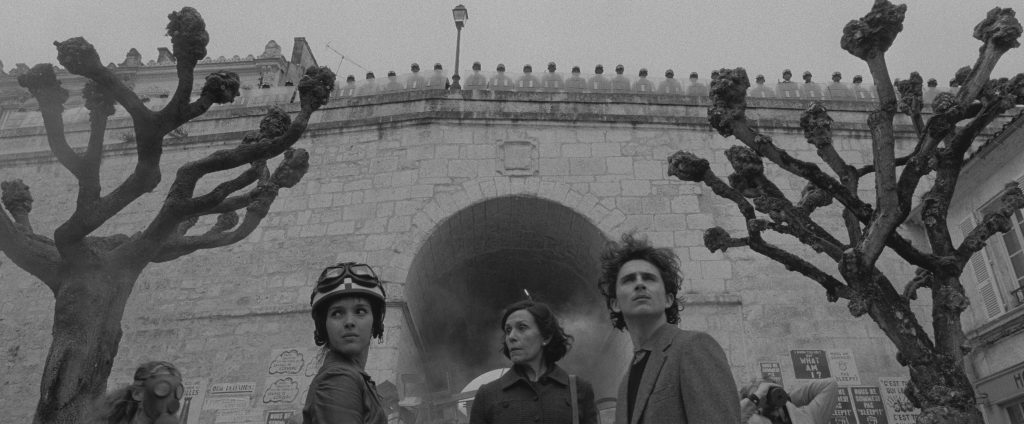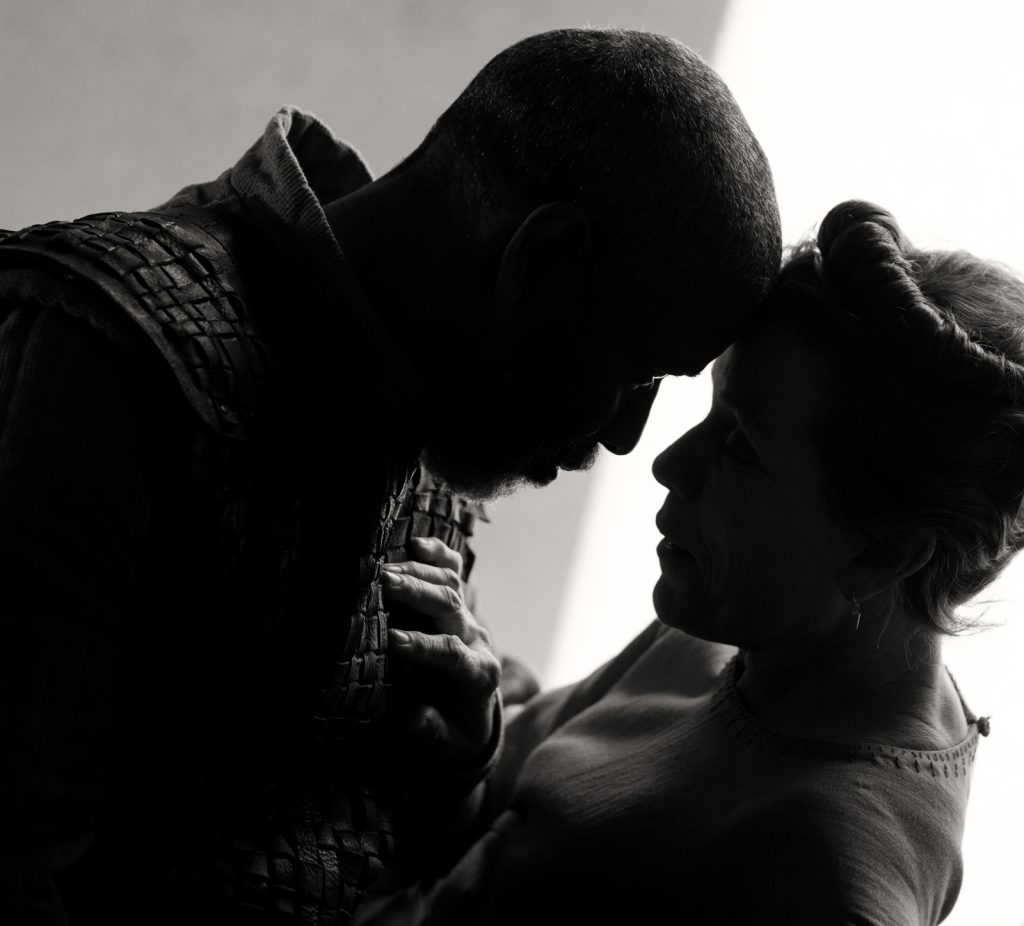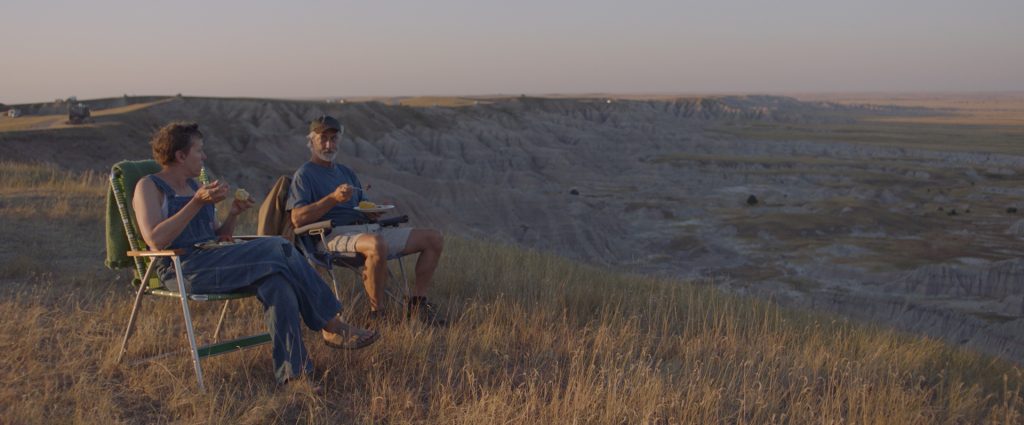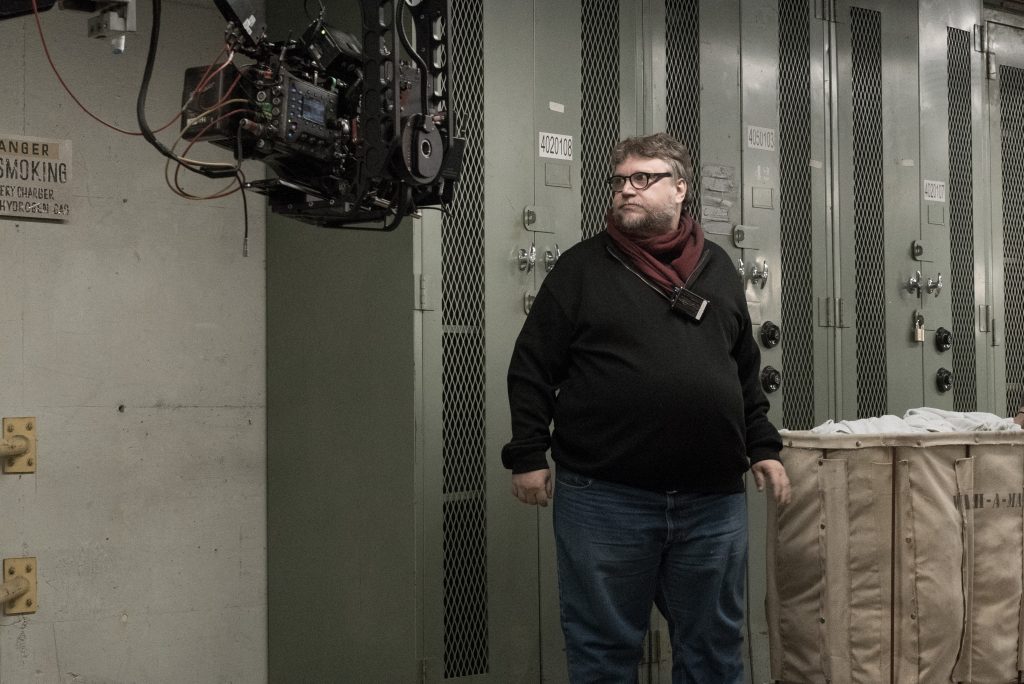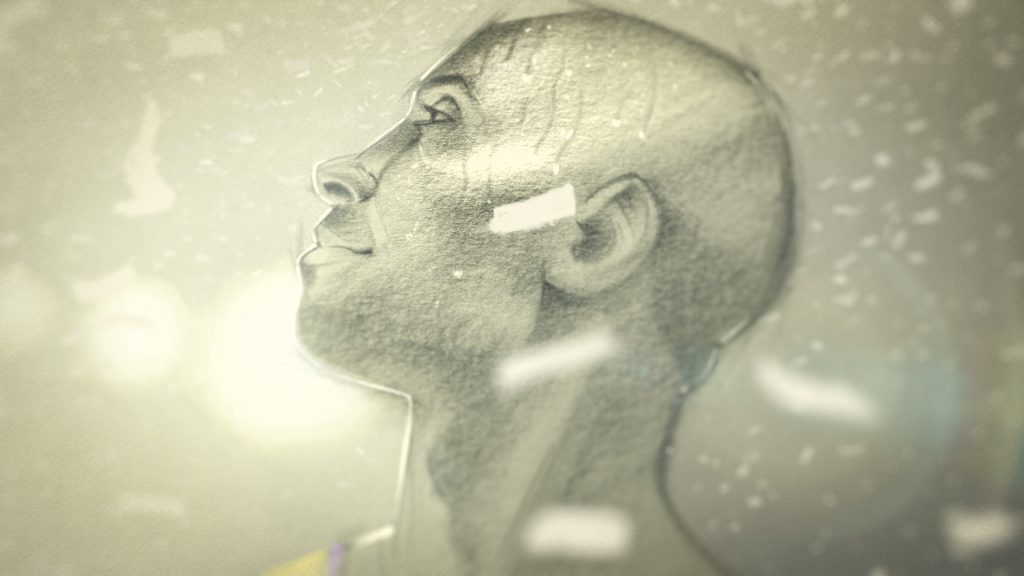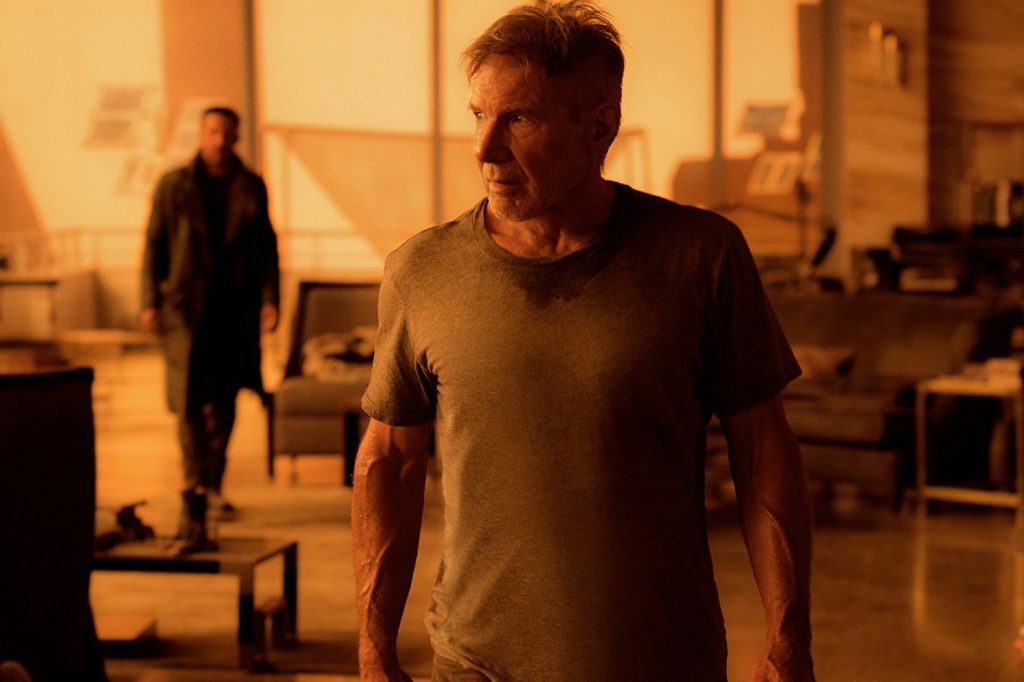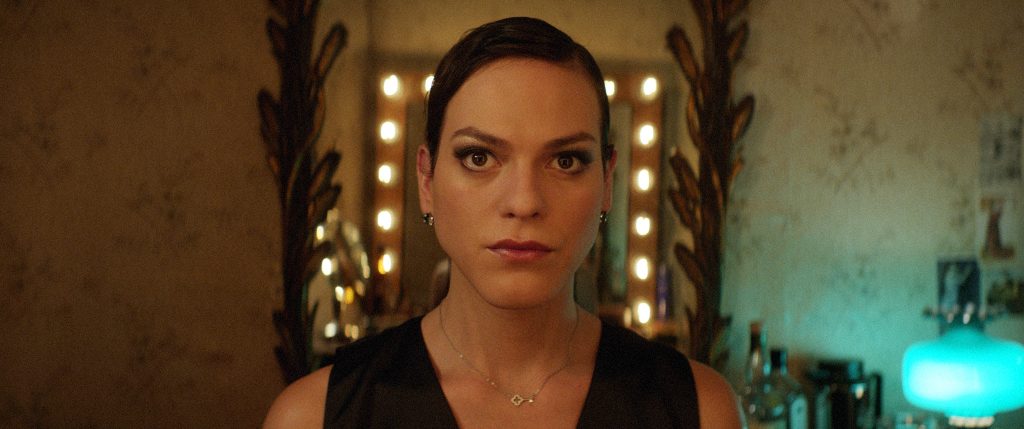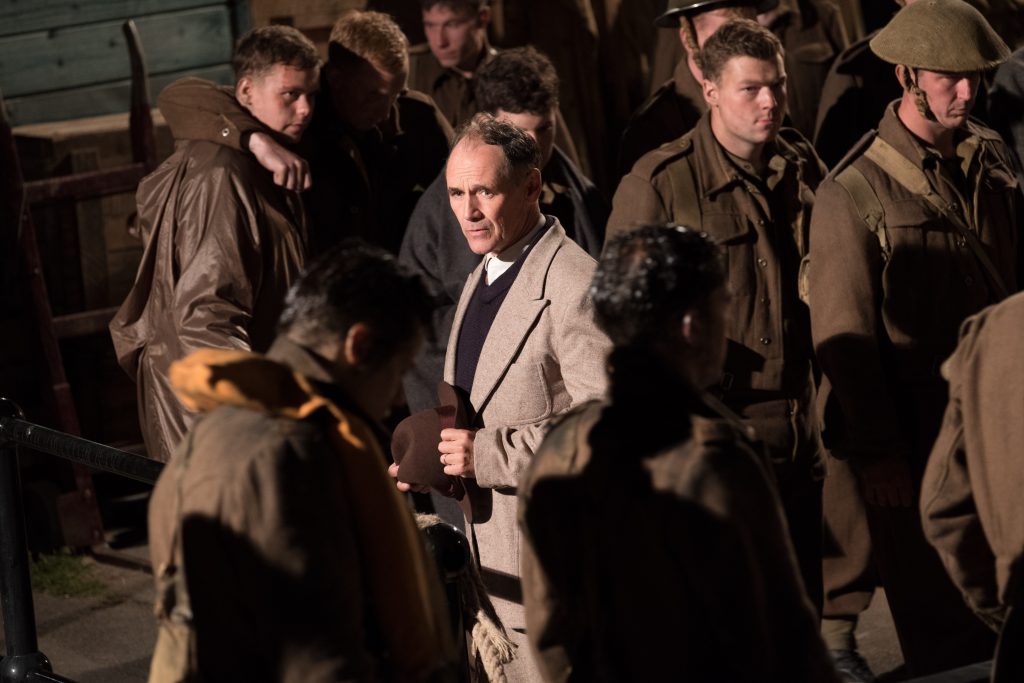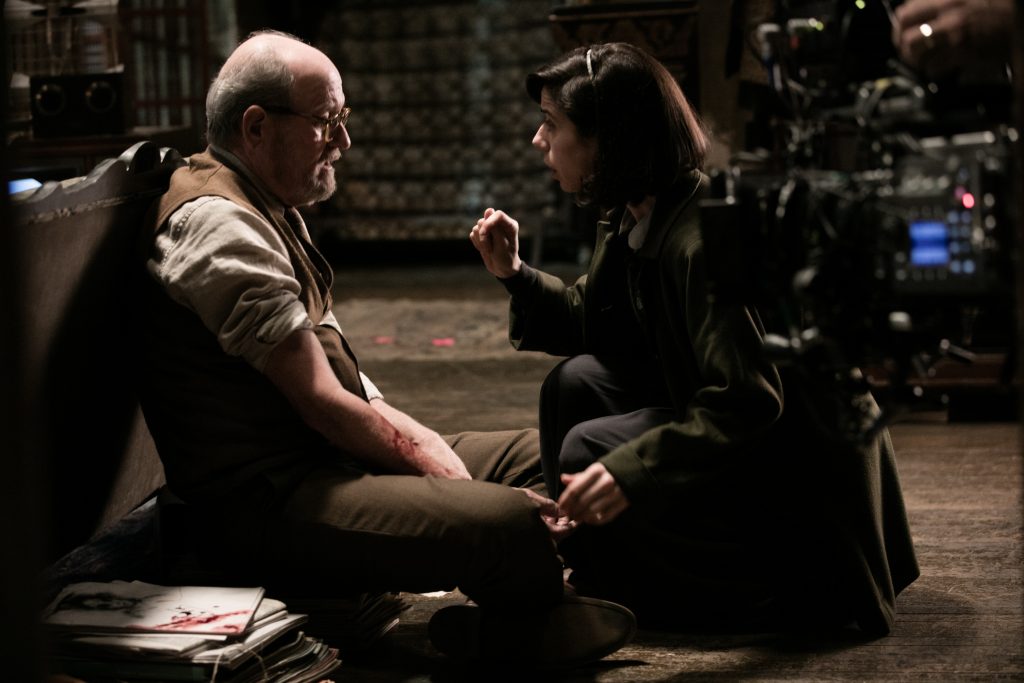December 3, 2022
by Carla Hay
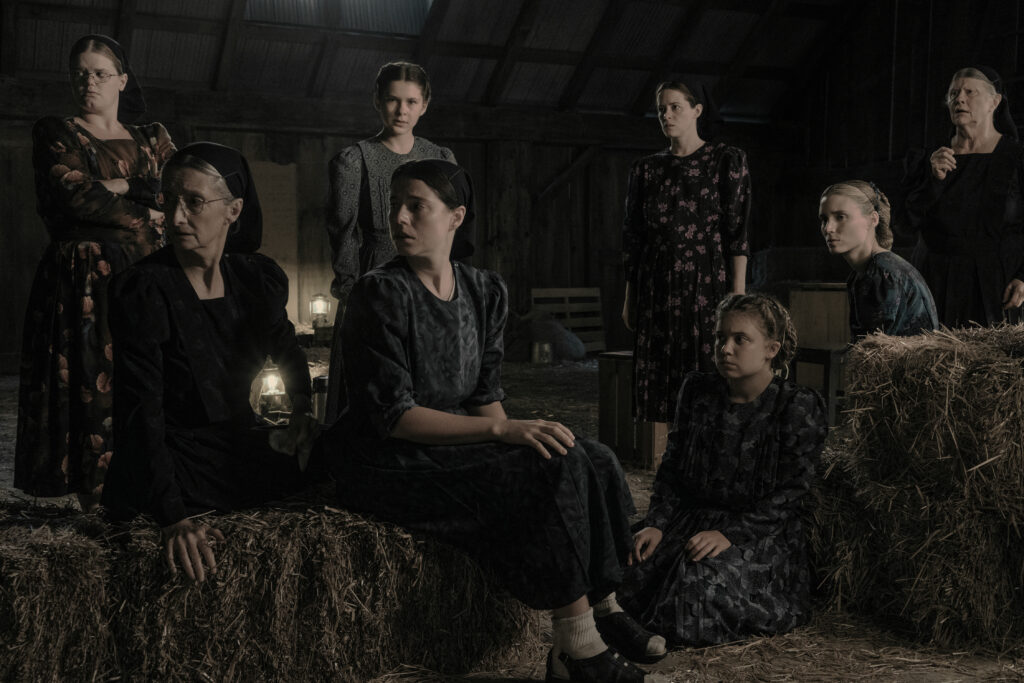
Directed by Sarah Polley
Culture Representation: Taking place in 2010, in an unnamed part of the United States, the dramatic film “Women Talking” features an all-white cast of characters representing the working-class and middle-class.
Culture Clash: At a patriarchal religious colony, the colony’s women have conflicts in deciding what to do next when almost all of the men in the colony have temporarily left because they are dealing with legal problems related to several of the colony’s men being arrested for drugging and raping the colony’s women and girls.
Culture Audience: “Women Talking” will appeal primarily to people who are fans of the Miriam Toews book on which the movie is based; the stars of the movie; and well-acted dramas about female empowerment in oppressive and misgoynistic environments.
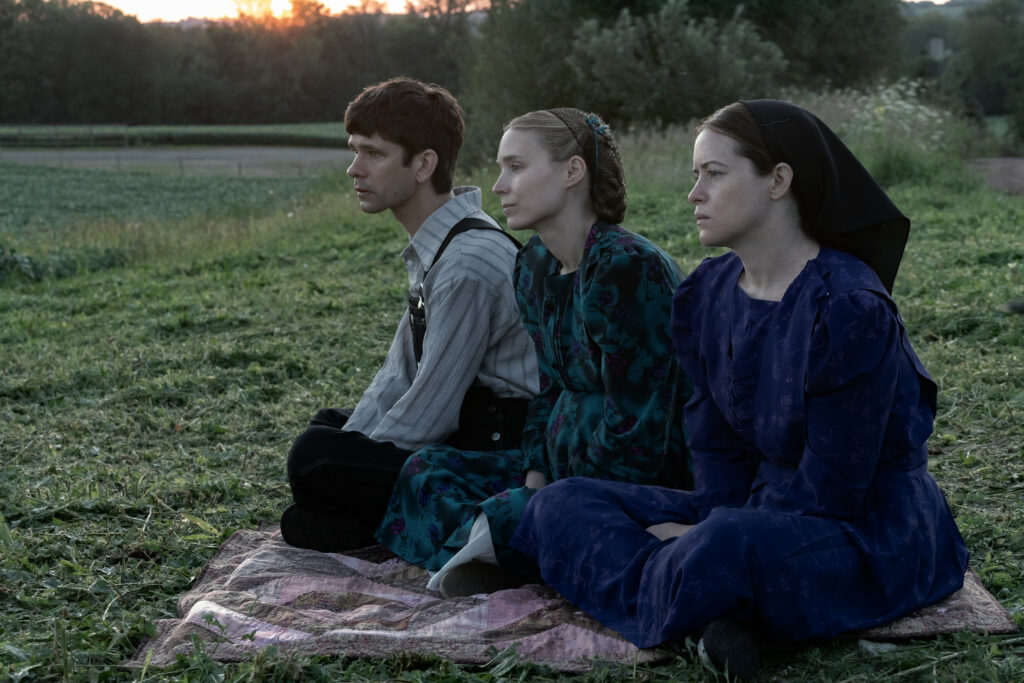
“Women Talking” is an accurate description for this tension-filled drama, because most of the movie centers on conversations rather than a lot of physical action. Sarah Polley directed and wrote the adapted screenplay of “Women Talking,” which is based on Miriam Toews’ 2018 novel of the same name. The movie comes across as a stage play in many areas, but it’s a worthy cinematic adaptation of the book, mostly because of the admirable performances from the talented cast members. The pacing is sluggish in some parts of the movie. However, viewer interest can be maintained if people are curious to see how the story is going to end.
The “Women Talking” movie, which is set in 2010 in an unnamed part of the U.S., makes some interesting and unexpected changes to the book, but largely remains faithful to the story’s plot. (The movie was actually filmed in Canada’s Ontario province.) “Women Talking” had its world premiere at the 2022 Telluride Film Festival in Colorado. The movie than made the rounds at several other film festivals in 2022, including the Toronto International Film Festival, the New York Film Festival and the BFI London Film Festival.
One of the main reasons why “Women Talking” looks so much like a stage play is that the movie is mostly confined to the rural and isolated property where this religious colony lives. Several of the movie’s best scenes take place in a hayloft, where crucial decisions (and several arguments) happen during a crisis that will affect the future of the colony. “Women Talking” is a fascinating psychological portrait of what oppression can do to people and how people can deal with trauma in different ways.
The movie begins with this statement: “What follows is an act of female imagination.” Even if viewers don’t know anything about the “Women Talking” book, the movie tells viewers in the first 10 minutes what the crisis is in this colony. Several men in the colony have been drugging and raping the colony’s women and girls. As a result, most of the men of the colony have been arrested, while the other men who have not been arrested have gone to the city to get the men bailed out and attend to other legal matters.
Before these rapes were discovered, the women and girls who were raped were told that by the men that their assault injuries were the work of ghosts or part of the rape victims’ imaginations. Much harder to explain were the underage pregnancies that resulted from these rapes with girls who were supposed to be virgins. Some of these rapes were also incestuous. Toews (who was raised as a Mennonite) has said in interviews that “Women Talking” was inspired by a real-life Mennonite colony in Bolivia, where several men were arrested in 2009 for drugging and raping the colony’s women and girls.
“Women Talking” never shows these rapes—only the aftermath. It’s a wise decision on the part of Polley and the other filmmakers, because what’s more important is for the movie to show how rape survivors can try to heal from the trauma instead of recreating the rapes in ways that could easily become exploitative. The movie never names the religion of this colony, but it’s implied that it’s an extremist Mennonite community, just like it is in the book.
In this community, the people are taught that the male gender is always superior to the female gender. The women of the colony are not allowed to get a formal education and don’t know how to read and write, whereas the men are allowed to be educated. The colony also preaches that anyone who disobeys what the men want will have eternal damnation in hell.
The women have an emergency meeting in a hayloft to vote on one of three options: (1) Stay and fight; (2) Leave; and (3) Do nothing. The first and second options get the most votes, but the votes are deadlocked in a tie. Most of “Women Talking” shows the women trying to break this stalemate by getting a majority vote for one of the options. Things are also complicated because some of the women have underage sons, so if the women choose to leave, they also have to decide if the boys will go with them.
There are three families involved in this grueling process:
Family #1
- Agata Friesen (played by Judith Ivey), a level-headed matriarch, is emotionally torn because her two daughters have very different opinions about what to do.
- Ona (played by Rooney Mara), Agata’s bachelorette eldest daughter who is pregnant by rape, is open-minded, believes in female empowerment, and is inclined to make the decision to leave.
- Salome (played by Claire Foy), Agata’s married younger daughter, also believes in female empowerment, but outspoken and feisty Salome wants to stay and fight, because she’s furious about her 4-year-old daughter Miep (played by Emily Mitchell) being raped.
- Neitje (played Liv McNeil), Agata’s granddaughter, who is in her mid-teens, is being raised by Salome because Neitje’s mother Mina (the younger sister of Ona and Salome) committed suicide after Neitje was raped.
Family #2
- Greta Loewen (played by Sheila McCarthy) is a soft-spoken matriarch who is inclined to want to leave.
- Mariche (played by Jessie Buckley), Greta’s elder married daughter who is sarcastic and cynical, wants to stay, but she is very skeptical that the women could win against the men in a fight.
- Mejal (played by Michelle McLeod), Greta’s younger bachelorette daughter, is inclined to stay, and she’s considered the most rebellious and “unstable” of the group because she smokes cigarettes and sometimes has panic attacks.
- Autje (played by Kate Hallett), Mariche’s daughter, who is about 13 years old, is the best friend of Neitje.
Family #3
- Scarface Janz (played by Frances McDormand), a stern matriarch, is adamant about her decision to do nothing and firmly believes any other option will doom the women to an afterlife in hell.
- Anna (played by Kira Guloien), Scarface’s adult daughter is quiet, passive, and seems to be living in fear of her domineering mother.
- Helena (played Shayla Brown), Anna’s teenage daughter, just like Anna, doesn’t say much.
One of the movie’s departures from the book is that Neitje is the narrator, and she is speaking in the future to Ona’s child, who has now been born. Near the beginning of the movie, Neitje says in a voiceover narration: “I used to wonder who I would be if it hadn’t happened to me. I don’t care anymore.”
Only one man has been left behind on the property while the other men are in the city. His name is August Epp (played by Ben Whishaw), a kind and gentle teacher who has been allowed to come back to the colony to teach the boys of the colony. August spent most of his childhood in the colony, but when he was a boy, his parents were excommunicated from the colony for questioning the authority of the colony’s leaders. August helps the women by taking notes during the meeting and doing any other reading and writing that the women might need.
August has an additional motivation to help the women: He’s been in love with Ona for years, but she just wants August as a friend. August stays neutral during the women’s arguments and debates. However, it’s very obvious that he wants to be wherever Ona is.
Also part of the story is a mild-mannered teenager named Nettie (played by August Winter), who likes taking care of the colony’s younger kids. Nettie identifies as a transgender male who prefers to be called Melvin. (Winter is non-binary in real life.) Because this colony is isolated from the rest of society, the colony members (including Melvin) don’t know what transgender means, so many of the colony members treat Melvin as a girl who likes to dress and wear her hair like a boy.
Because this colony is very insular and doesn’t believe in using modern technology or cars, “Women Talking” often looks like it takes place in the mid-20th century. The biggest indication that the movie takes place in the 21st century is when a census employee drives his truck on the road near the property and uses a speaker to remind the residents to take the 2010 census. The Monkees’ 1968 hit “Daydream Believer” memorably plays on the speaker and is heard again later in the movie during the end credits.
The colony’s women hide themselves inside buildings when this census employee drives by, but Neitje and Autje run to the truck to have a friendly chat with the census taker. Things aren’t so friendly inside and outside the hayloft, as the debate continues over what to do, and as time is running out before the colony’s men return to the property. Some of the women think that if they stay, they can demand new rules for the colony, such as the right to be educated and to be treated equally. Others think the women and children are better off leaving and starting a new community on their own.
In this showcase for powerhouse acting talent, Foy and Buckley have the flashiest roles as the women who clash with each other the most. Salome is filled with defiance and rage and shouts things like, “I will burn in hell before I allow another man to satisfy his urges with the body of my 4-year-old daughter!” Mariche raises her voice too, but she also expresses her anger in some “are you insane” expressions on her face that are very entertaining to watch.
Whishaw’s sensitive and nuanced performance is thoroughly believable and sometimes heartbreaking, as August experiences unrequited love. Because he is the primary teacher the boys of the colony (who are all homeschooled), there are glimmers of hope that these boys will be raised to have more respect for women and girls than how they were taught before August returned to the colony. Rooney’s performance as Ona, who speaks in calm and measured tones, is very good, but Ona is often overshadowed by the sassiness of Salome and Mariche.
One aspect of “Women Talking” that might disappoint some viewers is that McDormand is only in the movie for less than 15 minutes. She’s one of the producers of “Women Talking” and shares top billing, but her on-screen appearance in the movie—although effective—still doesn’t seem like enough for someone McDormand’s high caliber of talent. In the production notes for “Women Talking,” McDormand explains: “I did not option the book with the idea of acting in the film, I optioned it because I wanted to produce a film based on the book, with Dede [Gardner, one of the producers] and Sarah [Polley]. But I love Scarface dramaturgically.”
Even with all the friction and arguments between the women, Polley’s thoughtful direction never lets the movie devolve into a “catfight” story. The women might not know how to read and write, but they are very articulate in exposing their wants, needs, hopes and dreams. Luc Montpellier’s brown-tinged cinematography in “Women Talking” might look dull to some viewers, but it’s supposed to be a reflection of the drab existence that the colony’s women have experienced for too long. Observant viewers will notice that scenes that have more hopeful emotions have more vibrant lighting.
“Women Talking” is not a man-bashing film, as some people might mistakenly think it is. It’s a movie against gender oppression and against sexual violence. The villains of the story are not given the type of agency and screen time that other filmmakers would choose to put in their version of “Women Talking.”
“Women Talking” is not the type movie that people will quickly forget after watching it. Whether people like or dislike the movie, “Women Talking” is the type of film that will inspire thought-provoking discussions for viewers. And that’s an indication of cinematic art that can make an impact.
Orion Pictures will release “Women Talking” in select U.S. cinemas on December 23, 2022, with an expansion to more U.S. cinemas on January 20, 2023.


